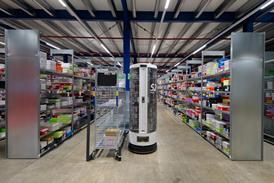Primark benefits from pent-up demand, sees inventories declining

Associated British Foods (ABF) expects the adjusted operating profit of its food business and Primark to exceed its expectation for the fourth quarter ending Sept. 18.
SIGN-IN if you are already a subscriber of Shoe Intelligence.

Subscribe today
Your membership benefits:
- Unlimited access to shoeintelligence.com - all insight, analysis and statistics 24h/day available online
- Our executive edition of Shoe Intelligence (Digital Edition) - the must-read for all decision-makers in the industry
- Weekly E-mail Briefing from the Chief Editor with the lastest analysis and most important industry developments
- Case studies and best practices on business challenges
- Guest chronicles, interviews, insights from industry experts and leaders that are shaping the future of the industry
- Unlimited access to shoeintelligence.com - all insight, analysis and statistics 24h/day available online
- Powerful search and access to over 16,500 articles and analyses in the archive
- Personal library to save articles and track your key content
- Organisation-wide access across offices, people and devices
To continue reading this article REGISTER NOW.


